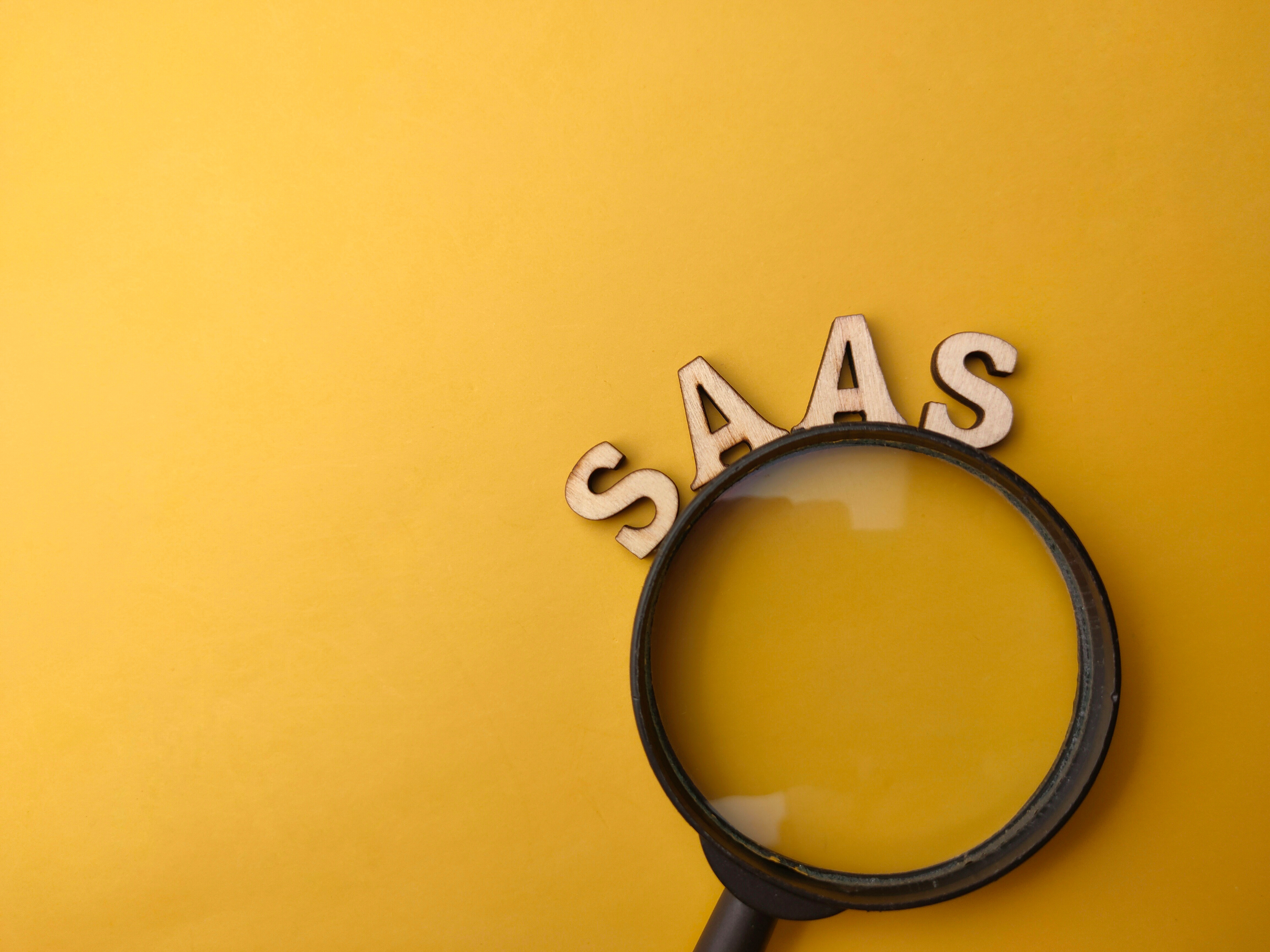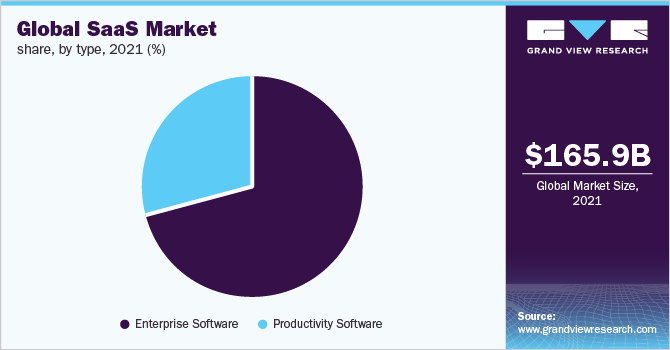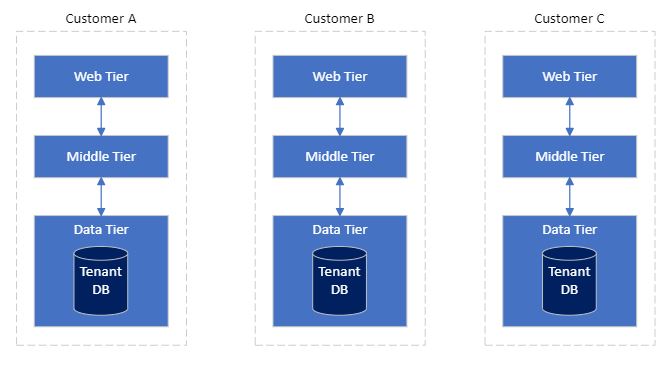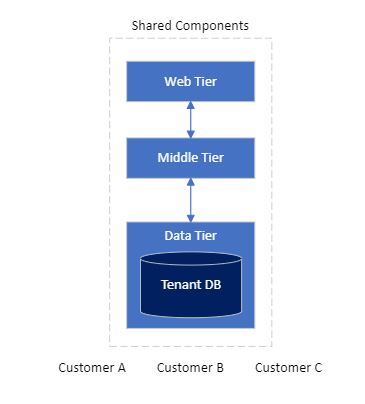How to Develop a SaaS Application in 2023: Step-By-Step Explanation
SaaS products have become an integral part of our lives. We use streaming services, corporate programs, healthcare applications and don’t even think that these all are examples of well-developed SaaS software.
A business can get many benefits from this approach. So, in this article, we’ll talk about how to build a SaaS application, what opportunities such products can provide and how to get the most of it.
What Is a SaaS Application?
SaaS, or Software As a Service, is a cloud-based way of delivering software via the Internet. Users don't need to install the product locally, maintain and update it, and monitor the operation of the hardware software.
The SaaS software delivery method provides a flexible set of features that can be configured depending on user needs. It also gives access to the necessary data from any device and from any place in the world. The main thing is to have an Internet connection.
It is a modern alternative to traditional licensed software that provides access to features as a service without licenses and waiting for updates. Such programs are hosted in the cloud and use its capabilities, so they don't need to be installed on the user's gadget. All infrastructure, security, availability and performance parameters are maintained by the cloud computing provider.
SaaS Apps vs. Web Applications
Both SaaS apps and web applications run on a server, but they have some fundamental differences. In the first case, the model provides for interaction with the product through an on-demand subscription gateway. The client chooses the desired functionality and gets access to it without configuring the program, installing it on the computer, etc.
Web applications run in a web browser and, in most cases, have one or only a few specific functions for a particular target audience. This can be video playback, specifying currencies, screen recording, etc. SaaS, in turn, has a more multi-level set of features that expands depending on the selected subscription.
These concepts are very related. Many SaaS applications have web versions. It can be a translator, a messenger (Slack, for example), etc.
In other words, SaaS app development is about a more precise concept of programming permissions. In comparison, a web application is more of a general term that can describe any application that is accessed through a web interface.
In the case of software as a service, the provider provides users with access to the cloud layer through an API or web interface. It usually provides maintenance, updates, and access to features in a subscription format. The user thus pays not for the product itself but rather for help and access to functionality.

Some Stats
Statistics show that in 2021, the Software as a Service market was estimated at approximately $146 billion. Experts claim that this number will grow with a rate (CAGR) of 11.0% per year, and by 2023 it will reach $195 billion. Stable growth will be maintained until 2028.

As for the SaaS app type based on usage purpose, the dominant segment is enterprise software, with a revenue share of more than 70%. This is due to the deployment of cloud applications in small and medium-sized enterprises.
In addition, enterprise (corporate) SaaS solutions are used by giants such as IBM, Adobe, Microsoft, Salesforce, etc., as they allow secure extended access to critical functionality. Such players have significantly increased market share.

Another important statistical data is the top of SaaS industry leaders. At the beginning of January 2022, Adobe Inc. has the largest market capitalization of $243 billion and is the largest SaaS company. Salesforce and Intuit are in second and third place with numbers of $224 billion and $160.7 billion, respectively. Shopify, with a capitalization of $143.2 billion, also entered the top.
Main Types of SaaS Applications
Such apps may differ in purpose, set of features, as well as in the way of accessing functionality. In general, two main types can be distinguished – traditional and white-label.
Traditional SaaS applications are branded and allow end users to know precisely who owns the software code. Vivid examples are Zoom, Slack, Adobe Creative Cloud, etc. These are products owned by specific companies and created for a broad audience. They are associated with a particular brand and can’t be used as non-branded products.
White-label SaaS has no direct association with a brand. Whoever buys it can customize it to their own needs, as well as resell its services under their own brand. In other words, the company purchases the software from the owner and rebrands it as its own.
This model is similar to renting retail space. The tenants design it, use brand signs and present the space as their own store, but it still belongs to the landlord, despite the association with someone else's brand.
Most often, white-label products contain both software and additional services for adding branded components to the program. Such platforms are more customizable and flexible. Access to them is most often provided through an API.
Benefits of Creating Own SaaS Application
As we can see from the statistics above, the SaaS business model is very popular and profitable. Cloud computing provides many new opportunities for businesses from various industries, and it would be wise to use them to your advantage.
There are many reasons to build a cloud-based saas application, and we will discuss the main ones. So, you can get the following benefits:
- Flexible and stable development. Such products allow changing the functionality and system in accordance with new goals and business needs. The user doesn’t need to wait for updates – updates and improvements happen quickly since the development process takes place in the cloud environment.
- High performance. Since everything happens on one central server, you don’t have to worry about response delays, data access problems, and bottlenecks. The risk of software failures is practically zero.
- Wide possibilities for scaling. Improving and scaling traditional applications can be quite painful, while SaaS products can be changed anywhere and anytime. The cloud environment is best suited for scaling.
- Cost efficiency. First, you don't have to invest in equipment and its maintenance. You get access to full functionality anywhere and anytime without hardware costs. In addition, the owner of such an application can always adapt the price plans according to the users' needs. This helps to set a reasonable price without losing audience and profit.
- Regular income. This advantage follows from the previous one: the SaaS model allows you to get a stable income from subscriptions and create a system of continuous investment in product development to increase income constantly. A kind of endless circle of regular improvements and income.
With the help of SaaS, you can attract more users and create a solid and stable client base. With proper management and product development, it will be a wide audience of loyal users, which is the foundation of the success of any business.
Find out what specific benefits can bring your project
Get free consultation
What Can You Give Your Users With SaaS Software?
Building your own saas application is also profitable because you immediately provide certain advantages for your customers.
First, your product is accessible from any device anywhere in the world. It can be easily adapted to customers' specific needs and ensure full comfort of use.
Second, you can easily anticipate the audience's wishes using advanced BI analysis systems. Based on the received data, you can instantly update the app without the need to download a new version. Automating upgrade processes improves product acceptance and makes life easier for your users.
It is also worth adding that cloud solutions can provide a high level of reliability. Such an environment is perfect for implementing advanced security measures and using AI technologies for fraud detection. In addition, in case of problems with one server, the program remains functional because the cloud is a whole network of servers, and all data is stored everywhere.
SaaS Application Architecture
SaaS cloud application development includes different approaches to app architecture design. Let’s take a look at some common options.
Single-Tenant
All tenant models are based on renting application components. Each client receives access rights to the platform by paying for a subscription.
The single-tenant architecture assumes that each client gets access to its own software instance with a single infrastructure, server, database, etc.
Simply put, a single-tenant architecture is based on serving a single customer that pays for a specific software service. In this case, specifically allocated resources belong only to one client, and he doesn’t share them with other users. In this way, it’s easier to customize the software for specific business needs and scale it.
This model is considered more secure, but it is also more difficult to maintain and support.
Examples: Oracle Cloud, Mattermost.
 Source: learn.microsoft.com
Source: learn.microsoft.com
Multi-Tenant
The multi-tenant architecture assumes that one common infrastructure can serve several clients at once. All resources are shared between them, but each individual tenant's data is protected and isolated to ensure the highest level of privacy and security.
The implementation of such a model can be different. The first option is to use one program instance and one database. In this case, customers use only one cloud environment and have access to one database.
The second option is to use one app instance but with several databases. This helps distribute the load and provide more resources to users.
Examples: Gmail, Yahoo, Google Drive, OneDrive, Shopify, Amazon Web Services (AWS), Salesforce, Dropbox.

Source: learn.microsoft.com
Mixed-Tenant
The concept of mixed tenancy is really complex. Simply put, the mixed-tenant architecture is used when business requirements need a unique approach. In such cases, the tenant can use the resources of the shared infrastructure but has several dedicated components at his disposal.
Most often, several parts of the application are intended for use by one tenant, and all other components are shared with others.
Examples: Amazon EC2

Source: learn.microsoft.com

Horizontal SaaS and Vertical SaaS
The definition of horizontal and vertical SaaS architecture is more about application targeting.
Horizontal products are designed to serve a large number of customers regardless of industry requirements. Such an architecture focuses more on functionality than on specific details. Such programs offer a limited number of universal features.
Examples: QuickBooks, Dropbox, Salesforce, HubSpot.
Vertical SaaS is created for specific verticals of a particular business industry. They are not adaptable for use in different industries but have a wider set of features for different users. If you want to build a SaaS application in accordance with specific business requirements and needs, this option is the best.
Examples: Thapos, Procore, Oracle Textura.
Source: datastorageasean.com

Learn more...
SaaS Application Development Process
How to create a SaaS application from scratch? The development process depends on many factors, including app type, required functionality, budget, etc. We’ll take a look at the most common approach and basic stages.
Step 1. Pre-Development Stage
The first step in developing any product is research and planning. The project's success depends equally on using the right tech stack and a relevant assessment of the target audience, market, end-user needs, business requirements, etc. The more clearly these points are, the easier it is to move on.
At this stage, business analysts, marketers, project managers, UI/UX designers, and developers take part in planning the process. Professional analysis and research are carried out, and specifications (SRS), and documentation of requirements are created based on the data obtained. Also, risk assessments are carried out, and a list of necessary features and estimates are drawn up.
Why Is This Important?
The discovery phase forms the foundation of development and defines a clear direction and such key points as real user needs, budget and precise business requirements. Based on this, even such details as development frameworks and cloud computing platforms (Azure, AWS, etc.) are chosen. Planning helps to avoid unnecessary costs and chaos, as well as to create the optimal composition of the team to develop SaaS application. This is especially important in outsourcing.
Step 2. SaaS Design
At this stage, the user interface and UX are created, and the application architecture is also designed. This step can be time-consuming, but it’s crucial in SaaS development.
Why Is This Important?
Proper design is the convenience of interaction between the user and the product, the basis of audience satisfaction. And the correct architecture is the basis of the fulfillment of technical requirements. This helps achieve the desired flexibility, scalability, security, etc.

Learn more...
About the best SaaS product design practices
Step 3. SaaS App Development
At this stage, the front-end and back-end of the product, its infrastructure and functionality are actually created. This is part of coding and regular quality control.
Depending on the SaaS type and complexity, an MVP is developed at this stage, i.e., a minimum viable product. It allows the team to test the quality and feasibility of the main functionality involving real users, identify shortcomings and fix them before developing more complex features.
DevOps engineers are also involved here to set up continuous integration and continuous delivery (CI/CD) tools, automate tasks, improve configuration management, etc. And what is no less important, at this stage, the optimal cloud solution type and provider are chosen.
Step 4. Final Testing
In most cases, testing is not a separate stage but takes place throughout the entire development process. Final testing is the last step before product deployment. At this stage, the last bugs and shortcomings are fixed.
Step 5. Maintenance and Support
Here, the development team provides product maintenance: monitoring its performance, resolving shortcomings, expanding functionality, improving the interface, etc.
SaaS App Development Team Structure
Again, the team's composition to make a SaaS application is determined by the product's features and the industry, business needs, scale of development, budget, etc. An average team can look like this
-
Project Manager. This person is responsible for progress control, task management, requirements fulfillment, proper planning, etc.
-
Business Analyst. Responsible for building the business model, requirements clarifying, market and product assessment, etc.
-
Back-end Developer. Responsible for everything related to app architecture, the server side of development, etc.
-
Front-end Developer. This person is responsible for the client side of development, user interface functionality, etc.
-
UX/UI Designer. Responsible for everything related to user interface and user experience design, creating engaging user journey, diversity and assessability.
-
QA specialist. Responsible for all testing princess and quality control.
The actual number of specialists and the team composition also depend on your project size and goals. Sometimes this list includes marketers, system architects, etc.
Let’s form the perfect team for your project!
Get a free consultation
SaaS Application Development Challenges
In most cases, methodologies such as Agile are used for the development of SaaS products. They help smooth out all corners, predict risks and eliminate them. However, there are a few challenges to be aware of.
Choosing the Right Tech Stack
Regardless of the flexibility and high scalability of SaaS products, their development requires special attention to the choice of the tech stack. The SaaS provider's specific capabilities depend on the framework and technologies chosen.
Choosing the Right Cloud Computing Provider
Different cloud computing platforms have different advantages and pitfalls and suit different business needs. Changing the provider in the future is possible, but it is not recommended. Moreover, it is crucial for the SaaS migration process. Therefore, it is worth determining the optimal option at the first stage of development.
Meeting Real Business and Client Needs
The final product must meet the target audience's needs and all business requirements. If they are incorrectly defined at the first stages of development, there is a risk of losing funds and not getting the desired result.
Customers often think that they precisely know the market and its peculiarities. However, in most cases, this is not true. A business analyst should be involved, and the exact parameters of the needs should be determined, as well as the MVP should be tested before proceeding with full development.
Service-Oriented Mindset and Customer-Oriented Approach
It is usually challenging to find a team that would combine these two parameters. However, it is possible.
The development company must have sufficient experience and understand the current and future goals of the product, its features, and its potential. At the same time, the team must be interested in the SaaS application's success.
How Much Does It Cost To Build SaaS Application?
The cost of developing a custom SaaS application depends on many factors. The main ones are
- application type (its purpose, web app or mobile-first, etc.), the complexity of its infrastructure;
- functionality and business requirements;
- tech stack;
- the form of hiring engineers (outsourcing, in-house, etc.).
The best solution, in this case, would be to outsource development to an experienced company. This will reduce operating costs and the expenses of hiring professional engineers. For example, Ukrainian developers have a 2-3 times lower hourly rate than specialists of the same level from the USA.
Find Out The Exact Cost of Developing a SaaS App
Get a free consultation
Ardas Experience in Building SaaS Apps
Ardas team has extensive experience in SaaS application development, including creating solid architecture, engaging and user-oriented design, and working on SaaS cloud and migration issues. We also provide professional SaaS consulting services to help our clients create successful custom solutions that will meet all their business needs.
Based on our experience, we've created a unique approach to product development to ensure full transparency, estimation accuracy, budget control, and huge improvement opportunities. You can check out our portfolio to verify our team expertise. You can find projects of different complexity and purposes from various industries: fintech, trading, logistics, healthcare, medical IoT, etc.
Final Thoughts
As you can see, building a SaaS application from scratch is a multi-step process that requires unique expertise and a specific approach. SaaS products give customers many advantages, such as scalability, availability, ease of maintenance, etc. However, it is very important to have a team of specialists at your disposal who will monitor the smooth operation of the product, find room for improvement and keep up with the rapid-changing market.
We at Ardas will be happy to become such a team for you. In addition, we have unique offers for each client. So feel free to contact us and get a professional consultation.
